A 65 year old patient enters you clinic and with uncontrolled high blood pressure. You prescribe her a medication to manage her hypertension and discharge her. A few weeks later she comes back to your office complaining of a sudden onset of excruciating pain in her big toe. What 2 parts of the nephron could this drug being having an effect?
A 35 year old patient comes into their primary care office visit with complaints of chest pain after playing rugby. After a physical evaluation, an ECG is run. (Below) The patient says a. fib runs in their family on their father's side and asks whether the problem could be associated with that. The patient recalls their father taking a drug called dofetilide for the condition. What condition does that patient have, be specific, and would dofetilide help them?
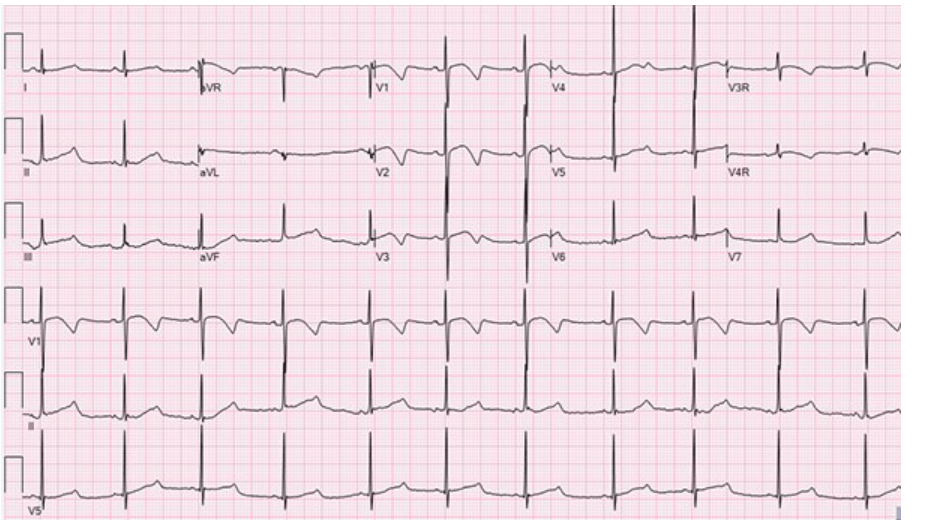
The patient has long QT type 1 and dofetilide would not be helpful
What type of racism is this?

Structural
A spine surgeon is performing a T4-T5 spinal fusion in which the vertebra are fused posteriorly using screws that go through the body of the vertebra. After surgery, the patient being to look pale experience shortness of breath, and is complaining of chest pain and later expires. The vessel that was compromised most likely residents in what region of the mediastinum?
Posterior (the aorta was punctured)
A 32 year old patient enter the ED with "the worst headache of his life". After emergency surgery, the patient is sable following a stroke. While taking a history, he tells you that his family has a mutation where is their is greater variety of conduction along the pulmonic veins. Most people in his family have not presented with any problems but is curious about whether his IV drug use has played a role in the likelihood that this disease will develop. From your knowledge, how likely is it that his IV drug use would lead to this problem?
Unlikely, IV drug use is more likely to lead to tricuspid dysfunction and right atrial enlargement.
A cardiologist is seeing two patient. Both patient seemingly have the same symptoms, histories, comorbidities, BMI, pretty much everything. However, one patient receives a smaller dosage of ACE inhibitors that the other. Who is the possible and by what guidelines was this physician acting upon?
A 67 year old has expired and an autopsy is ordered. The patient had a history of a myocardial infarction from a few year ago. The medial examiner removes heart and notices that even through the patient experienced an occlusion of their right coronary artery their was no fibrous tissue found around their SA node. What blood vessel must have supplied this section and how would you describe the dominance of this person?
Left Dominance with the Left Coronary Artery supplying the SA node
A 15 year old patient comes into you clinic after an episode of ventricular tachycardia which actually subsided during the EKG reading in the hospital. You decide the patient should probably get another EKG and you decide to compare the two EKG, from the day of the ventricular tachycardia and today. The presence of what aspect of this patient disease, present on both EKGs, most likely lead to the cessation of the v-tach in the hospital?
Pre-excitation
A 27 year old patient is stung by a Bee. She begins to go into anaphylaxis and is rushed to a hospital as she forgot her EpiPen. After administering the epinephrine, the patient returns to normal. At this point, is the capillary pressure higher or lower than the Oncotic pressure in her capillaries?
Higher
What is this?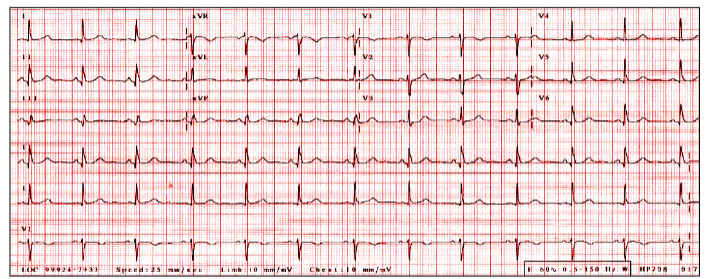
Normal Sinus rhythm
A scientist is looking at the action potential of ventricular myocardium when encountering a new drug. The detector of potential shows an less steep peek when going from phase 0 to phase 1 of the action potential, what channel may be effected by this drug?
Sodium channel
What is this and what is its mechanism?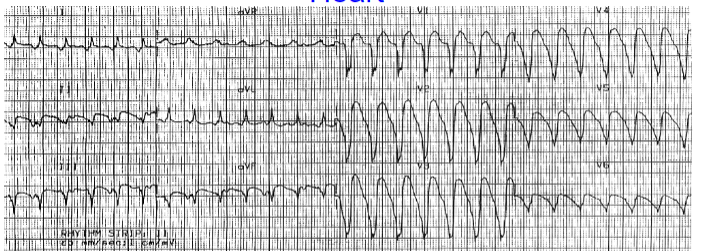
ARVT and reentry
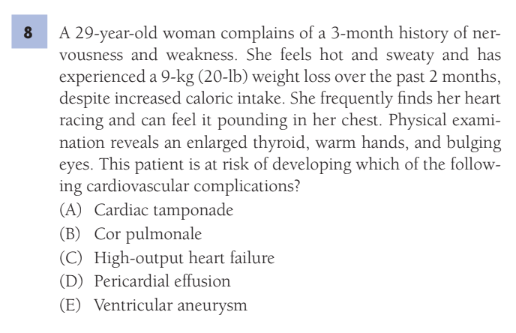
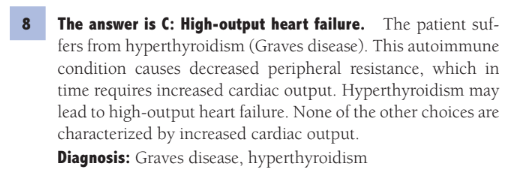
A 45 year old patient, who has recently had a infarction, presents in your office because he says his heart doesn't feel right. He explains that all of a sudden he feels like his heart skips a beat. The rhythm strip shows a QRS depolarization, every once in a while what occurs is the T-P interval right before a p wave without a QRS complex. Thus the patient most likely feels what phenomenon?